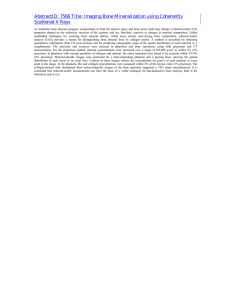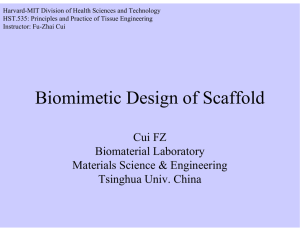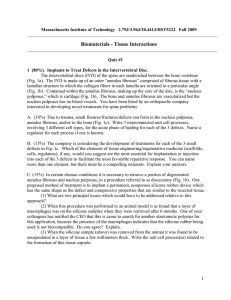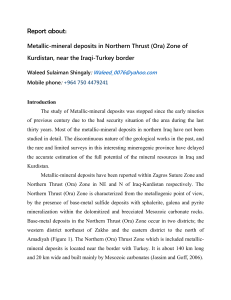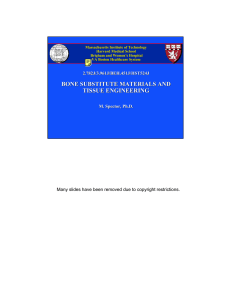Deposition of Thin Films of Biocompatible Calcium Carbonate via Template-Driven Mineralization
advertisement
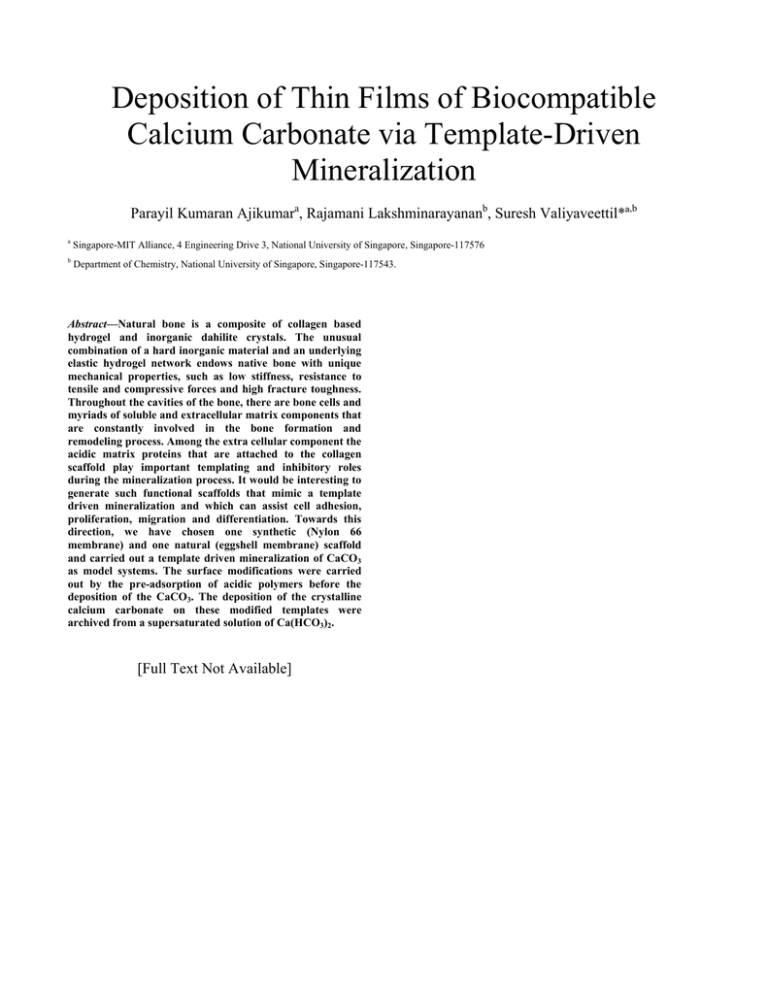
Deposition of Thin Films of Biocompatible Calcium Carbonate via Template-Driven Mineralization Parayil Kumaran Ajikumara, Rajamani Lakshminarayananb, Suresh Valiyaveettil*a,b a Singapore-MIT Alliance, 4 Engineering Drive 3, National University of Singapore, Singapore-117576 b Department of Chemistry, National University of Singapore, Singapore-117543. Abstract—Natural bone is a composite of collagen based hydrogel and inorganic dahilite crystals. The unusual combination of a hard inorganic material and an underlying elastic hydrogel network endows native bone with unique mechanical properties, such as low stiffness, resistance to tensile and compressive forces and high fracture toughness. Throughout the cavities of the bone, there are bone cells and myriads of soluble and extracellular matrix components that are constantly involved in the bone formation and remodeling process. Among the extra cellular component the acidic matrix proteins that are attached to the collagen scaffold play important templating and inhibitory roles during the mineralization process. It would be interesting to generate such functional scaffolds that mimic a template driven mineralization and which can assist cell adhesion, proliferation, migration and differentiation. Towards this direction, we have chosen one synthetic (Nylon 66 membrane) and one natural (eggshell membrane) scaffold and carried out a template driven mineralization of CaCO3 as model systems. The surface modifications were carried out by the pre-adsorption of acidic polymers before the deposition of the CaCO3. The deposition of the crystalline calcium carbonate on these modified templates were archived from a supersaturated solution of Ca(HCO3)2. [Full Text Not Available]

